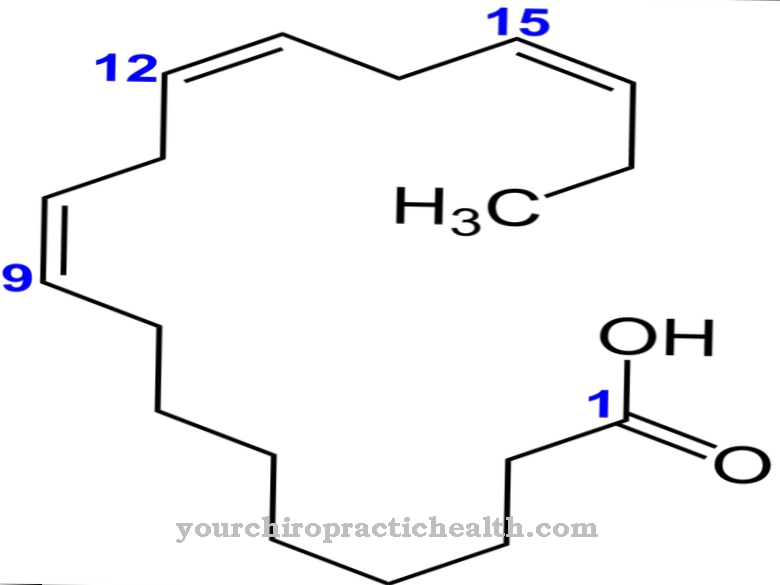Taurine is an organic acid that is particularly popular in connection with trendy energy drinks, the positive and negative effects of which have caused a stir. It should work with the strength of a bull, according to the advertising slogans. In addition, it is rumored to have been obtained from bull testicles as a derivative of amino acids, has a stimulating effect and mobilizes the power reserves, which, however, does not entirely correspond to the facts.
In fact, it serves to maintain cell and organ functions in the human body and is also an ingredient in complex nutritional supplements. Due to its natural occurrence in the body, it has many physiological effects, but can also lead to side effects in connection with other active ingredients.
What is taurine?
Taurine is the breakdown product of the sulfur-containing amino acids methionine and cysteine. It is not an amino acid, but an aminosulfonic acid.
It was first taken from ox bile as an organic acid in the 19th century, which is why it was given the name “taurine”. The word is derived from the Greek name "Tauros" and means "the bull". At that time, the chemists Leopold Gmelin and Friedrich Tiedemann mainly investigated the processes of digestion, were able to isolate taurine from the bile and also discovered cholesterol. Taurine occurs in the bile as taurocholic acid and is released there through hydrolysis. It is used for the formation of bile acids and is therefore a natural component of the human organism.
Function, effect & tasks
Taurine is also found in medicines and dietary supplements and is used in medicine as an infusion for artificial nutrition. Such receive z. B. Newborns, as their body cannot produce taurine by itself. Taurine z. B. the nerve cells and the retina of the eye of the embryo are formed.
The human adult body makes these connections specifically and basically does not need any additional intake of taurine. Nevertheless, under certain circumstances, a taurine deficiency can still occur. Infants obtain taurine e.g. B. through breast milk. In addition to the body's own stock, taurine is also found in foods, including dairy products, meat and fish. In the organism itself, the substance is contained in the tissue, serves to stabilize the cells, their membranes and to bind free radicals.
Education, occurrence, properties & optimal values
In the metabolism, taurine is formed from the protein building block cysteine, which is oxidized in the body in intermediate steps. Taurine is also formed when the coenzyme A is broken down. It is part of the compounds of bile acids and promotes fat digestion. The bile acids that form in the liver are better dissolved by taurine.
The compounds are then stored temporarily in the gallbladder and reach the small intestine, where they are broken down again. This process creates free bile acids that process and break down dietary fats and conduct them into the blood.
In addition, the fluid content in the cells is stabilized by taurine and it plays a role in the transmission of stimuli in the brain and for certain nerve functions. It also has an impact on the heart rhythm. Taurine, for example, can cross the blood-brain barrier in the organism and is used to transmit signals to the brain cells. It stimulates membrane binding to calcium and the movement of potassium and sodium across cell membranes. This in turn causes a stable heartbeat and a positive effect on the heart muscle. Taurine is also an antioxidant and thus protects the tissue from damage.
Diseases & Disorders
If there is a lack of taurine in the body, it can lead to disorders in the immune system and kidney failure. Since taurine has an anti-inflammatory effect, tissue regions in particular are dependent on it.
In contrast, it has not been scientifically proven that taurine can increase performance, endurance and concentration. The energy drink is usually used as a stimulant in conjunction with caffeine and even in this regard the effect is more of a placebo effect than it actually is.
Whether side effects become noticeable with increased taurine intake depends on various factors. If the maximum daily dose is adhered to, the intake of taurine is relatively safe. However, this applies to healthy people. Kidney or circulatory problems, but also liver damage, are aggravated by taurine.
Taurine is available as an infusion solution, as a substance in beverages, as a powder or capsule. Side effects only occur if the dose is too high. The daily intake of up to a thousand milligrams per kilogram of body weight was specified. Otherwise, especially in connection with caffeine, it leads to agitation, nausea, even palpitations, cramps and cardiac arrhythmias. Pregnant women, breastfeeding women and children should generally avoid energy drinks.
Taurine can be dangerous, especially in combination with alcohol. In the discos, energy drinks are served as mixed drinks in conjunction with vodka or similar spirits and are very popular. However, this pleasure is not without its dangers, especially due to the combination of taurine, caffeine and alcohol. The side effects are the same as those mentioned, but can also become more serious, leading to circulatory collapse, kidney failure and cardiac arrest.
The stimulating energy drink is also not recommended in connection with physical activity, in contrast to the alleged tendency to strengthen muscles and concentration. The beverages described as hypertonic neither improve the supply of minerals nor do they have a positive effect on the body's fluid balance. Energy shots that contain such a high dose of caffeine and taurine in a very small amount of liquid that there is a risk of an overdose are also questionable.













.jpg)

.jpg)
.jpg)











.jpg)